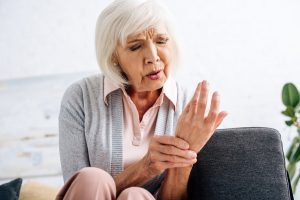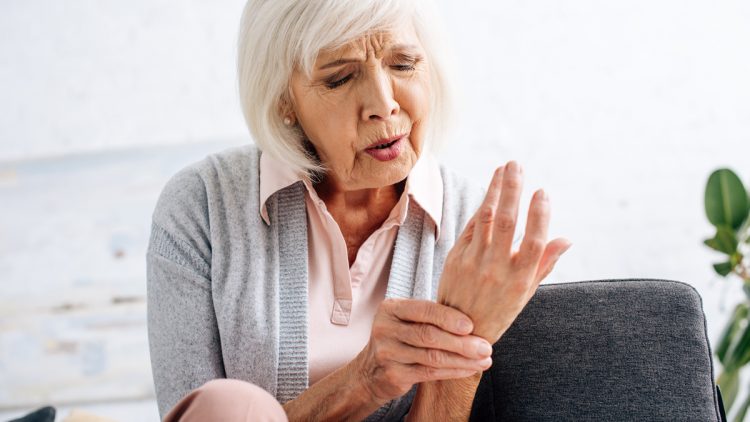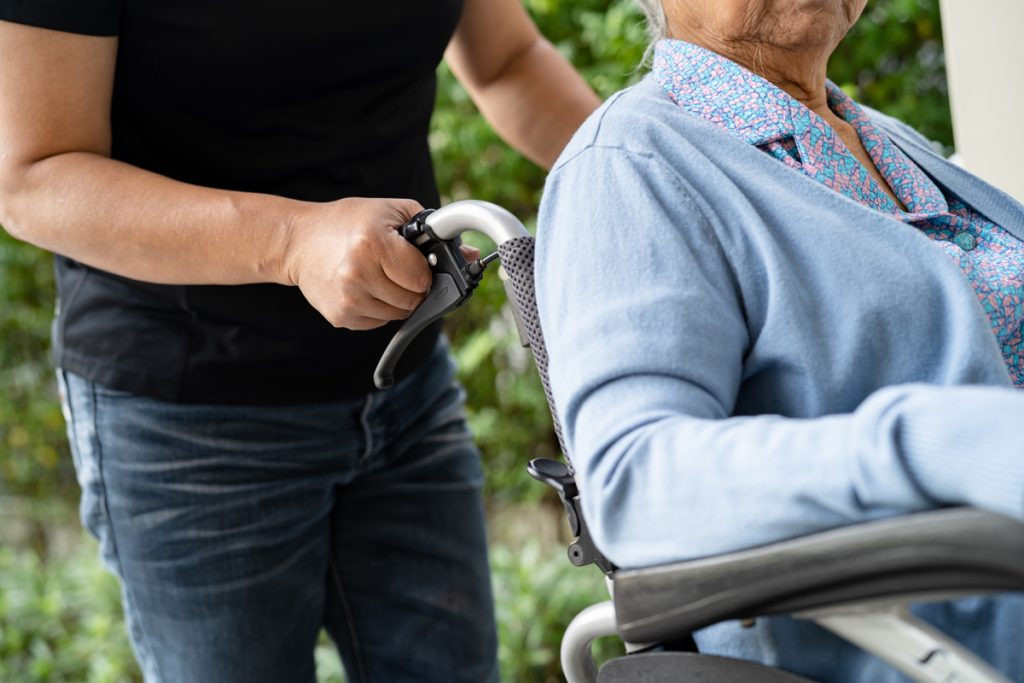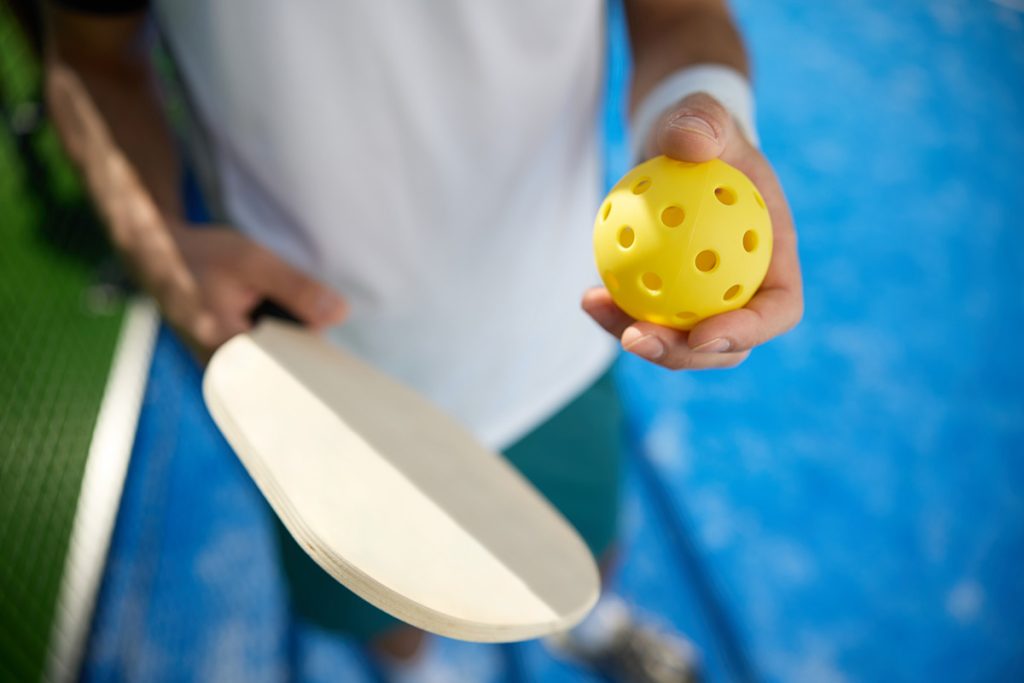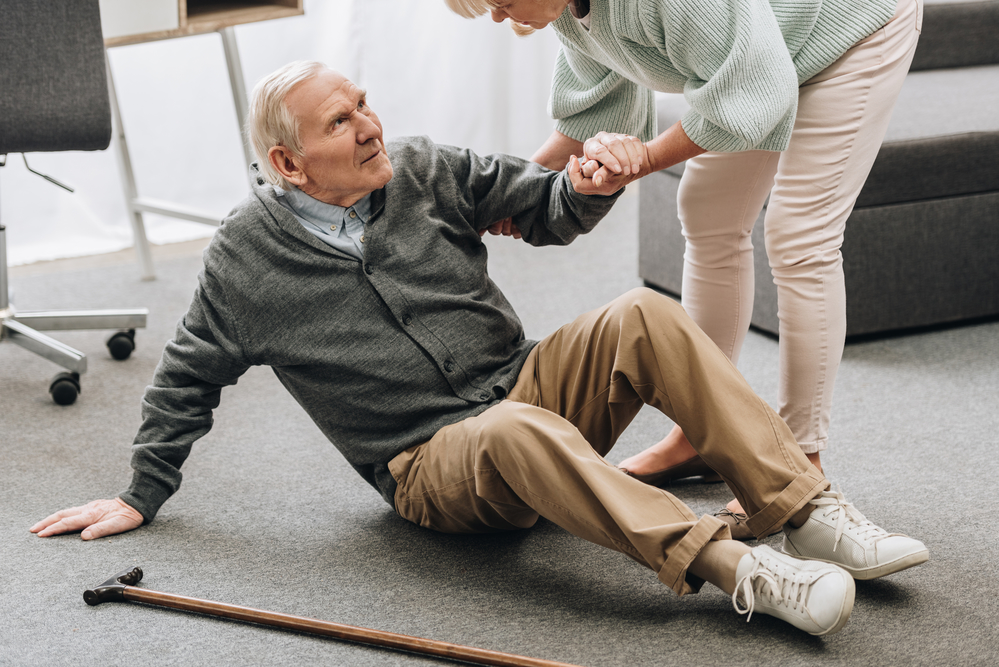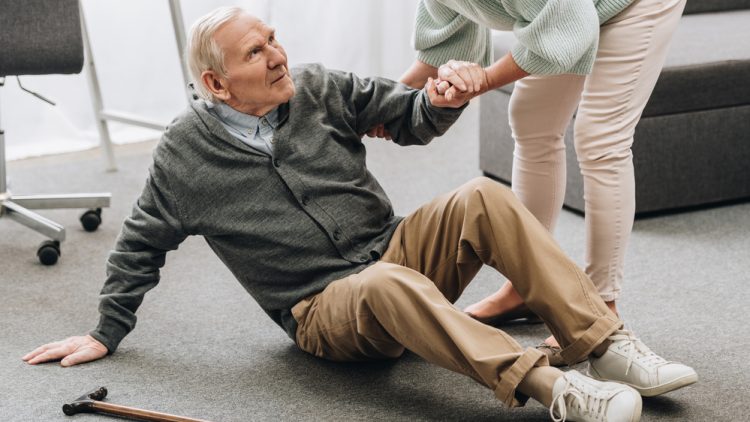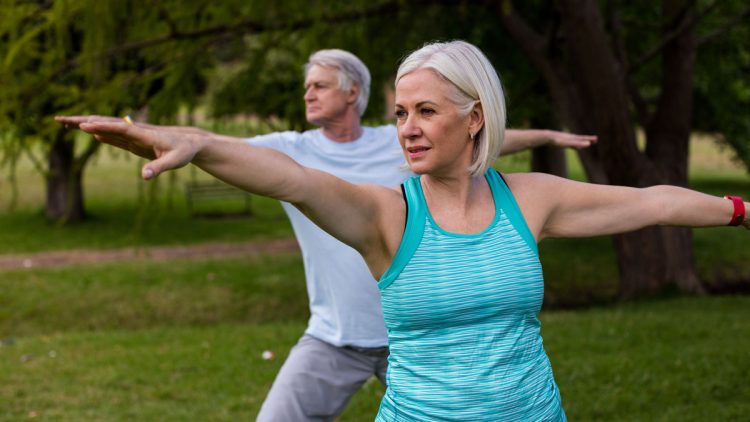Physical health is important for everyone, but it is especially important for seniors. As we age, our bodies naturally change and become more susceptible to disease. Physical activity can help to slow down the aging process and improve overall health.
Here are some of the benefits of physical activity for seniors:
- Reduces the risk of chronic diseases: Physical activity can help to reduce the risk of chronic diseases such as heart disease, stroke, type 2 diabetes, and some types of cancer.
- Improves balance and coordination: Balance and coordination are important for preventing falls, which are a major cause of injury and death in seniors.
- Strengthens bones and muscles: Physical activity can help to strengthen bones and muscles, which can help to improve mobility and reduce the risk of falls.
- Improves mood and sleep: Physical activity can help to improve mood and sleep, which are both important for overall health and well-being.
- Increases energy levels: Physical activity can help to increase energy levels and improve stamina.
- Promotes independence: Physical activity can help to promote independence and reduce the need for assistance with daily activities.
The Centers for Disease Control and Prevention (CDC) recommends that adults aged 65 and older get at least 150 minutes of moderate-intensity aerobic activity or 75 minutes of vigorous-intensity aerobic activity each week. In addition, they should do muscle-strengthening activities that work all major muscle groups on two or more days a week.
Some examples of moderate-intensity aerobic activities include:
- Brisk walking
- Dancing
- Biking
- Swimming
- Water aerobics
Some examples of vigorous-intensity aerobic activities include:
- Running
- Jumping rope
- Swimming laps
- Playing tennis
- Hiking
Some examples of muscle-strengthening activities include:
- Lifting weights
- Doing push-ups and sit-ups
- Using resistance bands
- Gardening
- Dancing
It is important to start slowly and gradually increase the amount and intensity of physical activity. If you have any health concerns, talk to your doctor before starting an exercise program.
Physical health is important for everyone, but it is especially important for seniors. As we age, our bodies naturally change and become more susceptible to disease. Physical activity can help to slow down the aging process and improve overall health.
Here are some of the benefits of physical activity for seniors:
- Reduces the risk of chronic diseases: Physical activity can help to reduce the risk of chronic diseases such as heart disease, stroke, type 2 diabetes, and some types of cancer.
- Improves balance and coordination: Balance and coordination are important for preventing falls, which are a major cause of injury and death in seniors.
- Strengthens bones and muscles: Physical activity can help to strengthen bones and muscles, which can help to improve mobility and reduce the risk of falls.
- Improves mood and sleep: Physical activity can help to improve mood and sleep, which are both important for overall health and well-being.
- Increases energy levels: Physical activity can help to increase energy levels and improve stamina.
- Promotes independence: Physical activity can help to promote independence and reduce the need for assistance with daily activities.
The Centers for Disease Control and Prevention (CDC) recommends that adults aged 65 and older get at least 150 minutes of moderate-intensity aerobic activity or 75 minutes of vigorous-intensity aerobic activity each week. In addition, they should do muscle-strengthening activities that work all major muscle groups on two or more days a week.
Some examples of moderate-intensity aerobic activities include:
- Brisk walking
- Dancing
- Biking
- Swimming
- Water aerobics
Some examples of vigorous-intensity aerobic activities include:
- Running
- Jumping rope
- Swimming laps
- Playing tennis
- Hiking
Some examples of muscle-strengthening activities include:
- Lifting weights
- Doing push-ups and sit-ups
- Using resistance bands
- Gardening
- Dancing
It is important to start slowly and gradually increase the amount and intensity of physical activity. If you have any health concerns, talk to your doctor before starting an exercise program.
Here are some additional tips for maintaining physical health in your senior years:
- Eat a healthy diet. A healthy diet includes plenty of fruits, vegetables, and whole grains. It is also important to limit unhealthy fats, processed foods, and sugary drinks.
- Get enough sleep. Adults aged 65 and older need 7-8 hours of sleep each night.
- Manage stress. Stress can take a toll on physical health. Find healthy ways to manage stress, such as exercise, relaxation techniques, or spending time with loved ones.
- See a doctor regularly. Regular checkups can help to identify any health problems early on.
By following these tips, you can maintain your physical health and enjoy a long and healthy life.
Walking For Seniors
Walking is a great exercise for seniors because it is low-impact and easy on the joints. It is also a good way to improve balance and coordination, which are important for preventing falls.
Here are some tips for walking exercises for seniors:
- Start slowly and gradually increase the distance and duration of your walks.
- Walk on a level surface, such as a sidewalk or treadmill.
- Wear comfortable shoes that provide good support.
- Bring a water bottle with you to stay hydrated.
- Listen to your body and stop if you feel pain.
f you are a senior who is new to walking, start with short walks and gradually increase the distance and duration of your walks. It is also a good idea to talk to your doctor before starting an exercise program.
Here are some ideas for walking exercises for seniors:
- Walk around your neighborhood.
- Walk at a local park or trail.
- Walk with a friend or family member.
- Walk during your lunch break.
- Walk after dinner.
- Walk while listening to music or audiobooks.
- Walk while talking on the phone.
By following these tips, you can enjoy the many benefits of walking and improve your physical health and well-being.
Here are some of the best times of day for seniors to walk:
- Morning: Walking in the morning can help to boost your energy levels and improve your mood.
- Evening: Walking in the evening can help you to relax and unwind after a long day.
- Afternoon: Walking in the afternoon can help to break up the day and give you a chance to get some fresh air.
The best time of day to walk depends on your individual preferences and schedule. If you are a morning person, walking in the morning may be a good option for you. If you are more of a night owl, walking in the evening may be a better fit.
It is important to find a time of day that works for you and that you are most likely to stick with. If you are not sure when to start walking, talk to your doctor. They can help you choose a time that is right for you.
Dancing For Seniors
Dancing is a great way for seniors to stay active and healthy. It is a low-impact activity that is easy on the joints, and it can help to improve balance, coordination, and flexibility. Dancing can also help to reduce stress and improve mood.
Here are some of the benefits of dancing for seniors:
- Improves balance and coordination: Dancing can help to improve balance and coordination, which are important for preventing falls.
- Strengthens bones and muscles: Dancing can help to strengthen bones and muscles, which can help to improve mobility and reduce the risk of falls.
- Improves mood and sleep: Dancing can help to improve mood and sleep, which are both important for overall health and well-being.
- Increases energy levels: Dancing can help to increase energy levels and improve stamina.
- Promotes social interaction: Dancing can be a great way to meet new people and socialize.
- Reduces stress: Dancing can help to reduce stress and improve mental health.
There are many different types of dancing that are suitable for seniors, such as ballroom dancing, line dancing, and Zumba. It is important to find a type of dancing that you enjoy and that is appropriate for your fitness level.
If you are new to dancing, it is a good idea to start with a beginner class. This will give you the opportunity to learn the basics of dancing and to get comfortable with the movements. There are many different places where you can take dance classes for seniors, such as community centers, senior centers, and fitness clubs.
Here are some tips for dancing for seniors:
- Start slowly and gradually increase the intensity of your workouts.
- Listen to your body and stop if you feel pain.
- Wear comfortable clothing and shoes.
- Stay hydrated by drinking plenty of fluids.
- Find a dance partner who is supportive and encouraging.
Dancing can be a great way for seniors to stay active and healthy. It is a fun and enjoyable activity that can provide many benefits for physical and mental health.
Here are some additional tips for finding a dance class for seniors:
- Ask your friends or family if they know of any good classes.
- Check with your local community center or senior center.
- Look for classes that are specifically designed for seniors.
- Make sure the class is at a time that works for you.
- Try out a few different classes before you decide which one is right for you.
Biking For Seniors
Biking is a great way for seniors to stay active and healthy. It is a low-impact activity that is easy on the joints, and it can help to improve balance, coordination, and flexibility. Biking can also help to reduce stress and improve mood.
Here are some of the benefits of biking for seniors:
- Improves balance and coordination: Biking can help to improve balance and coordination, which are important for preventing falls.
- Strengthens bones and muscles: Biking can help to strengthen bones and muscles, which can help to improve mobility and reduce the risk of falls.
- Improves mood and sleep: Biking can help to improve mood and sleep, which are both important for overall health and well-being.
- Increases energy levels: Biking can help to increase energy levels and improve stamina.
- Promotes social interaction: Biking can be a great way to meet new people and socialize.
- Reduces stress: Biking can help to reduce stress and improve mental health.
However, there are some safety considerations that seniors should keep in mind when biking:
- Wear a helmet: A helmet is the single most important safety gear for cyclists of all ages. It can help to protect your head in the event of a fall.
- Be visible: Wear bright clothing and reflective gear so that you are visible to motorists and other cyclists.
- Be aware of your surroundings: Pay attention to traffic and pedestrians, and be prepared to stop or slow down as needed.
- Don’t bike in bad weather: Avoid biking in icy or snowy conditions, as well as in heavy rain or wind.
- Start slowly and gradually increase your distance and intensity: As with any new exercise program, it is important to start slowly and gradually increase the intensity and duration of your rides.
If you are a senior who is new to biking, it is a good idea to start with short rides in a safe area. You can gradually increase the distance and intensity of your rides as you get stronger and more comfortable. It is also a good idea to talk to your doctor before starting a biking program, especially if you have any health concerns.
Here are some tips for finding a safe place to bike:
- Look for trails or paths that are designed for cyclists.
- Avoid biking on busy roads.
- Be aware of potential hazards, such as potholes and uneven pavement.
- If you are biking in a city, be aware of traffic signals and obey the rules of the road.
By following these safety tips, you can enjoy the many benefits of biking and stay safe on the road.
Here are some additional tips for biking for seniors:
- Choose a bike that is comfortable and fits you properly.
- Make sure your bike is in good working order.
- Bring water and snacks with you on your rides.
- Ride with a friend or family member.
- Take breaks when you need them.
Swimming And Water Aerobics For Seniors
Here are some of the benefits of swimming and water aerobics for seniors:
- Improves balance and coordination: Both swimming and water aerobics are low-impact exercises that are easy on the joints, making them a good option for people with balance or mobility issues. The buoyancy of the water helps to support the body, which can make it easier to move and balance.
-
- Strengthens muscles: Swimming and water aerobics can help to strengthen all of the major muscle groups, including the heart, lungs, and muscles in the arms, legs, and core. This can help to improve mobility and reduce the risk of falls.
- Improves cardiovascular health: Swimming and water aerobics are both aerobic exercises, which means they help to improve heart health and circulation. This can help to reduce the risk of heart disease, stroke, and other chronic health conditions.
- Increases flexibility: The buoyancy of the water can help to improve flexibility by taking some of the weight off of the joints. This can make it easier to move the joints through their full range of motion.
- Reduces stress: Swimming and water aerobics can be a relaxing and enjoyable way to relieve stress. The water can help to massage the body and the gentle movements can help to calm the mind.
- Promotes social interaction: Swimming and water aerobics classes can be a great way to meet new people and socialize. This can be especially beneficial for seniors who may be feeling isolated or lonely.
Here are some of the differences between swimming and water aerobics:
- Swimming: Swimming is a full-body workout that can be done in a pool or open water. It is a great way to improve cardiovascular health, strength, and flexibility.
- Water aerobics: Water aerobics is a group exercise class that is typically done in a pool. It is a low-impact workout that is easy on the joints and can be tailored to all fitness levels.
Both swimming and water aerobics can be beneficial for seniors, but the best option for you will depend on your individual preferences and fitness level. If you are new to exercise, water aerobics may be a good option because it is a low-impact workout. If you are looking for a more challenging workout, swimming may be a better choice.
It is important to talk to your doctor before starting any new exercise program, especially if you have any health concerns.
Here are some tips for swimming and water aerobics for seniors:
- Start slowly and gradually increase the intensity and duration of your workouts.
- Listen to your body and stop if you feel pain.
- Wear comfortable clothing and shoes that are appropriate for the water.
- Stay hydrated by drinking plenty of fluids before, during, and after your workout.
- Take breaks when you need them.
By following these tips, you can enjoy the many benefits of swimming and water aerobics safely and comfortably.
